Why Does Misinformation Follow Extreme Weather?
The Drain is a weekly roundup of environmental and climate news from Legal Planet.

Nowadays when an extreme weather event strikes in America, what follows is a secondary emergency in the form of misinformation on social media. We’ve seen it play out after floods and heat waves, but this phenomenon really goes into overdrive after hurricanes and wildfires.
A recent report from the Center for Countering Digital Hate looked at why this happens and concludes that Meta, X, and YouTube helped spread misleading information after Hurricanes Helene and Milton in the fall of 2024 and the LA firestorms in January 2025. The report details what researchers called “disturbing evidence of tech companies elevating conspiracy superspreaders, profiting from lies about rescue efforts, and enabling falsehoods that could impede emergency response and place lives at risk.”
For example, the social media views of “Infowars” host Alex Jones exponentially outnumbered the views of official emergency response information amid the LA wildfires. Jones’ “massive bombshell” claims — including accusations of FEMA “food confiscation” and globalist plots — amassed over 400 million views on X — more than double the combined reach of FEMA and ten major news outlets. (Of course, “views” on social media may very well include bots or fake accounts. But even if the metrics are problematic, the numbers are orders of magnitude different so it’s not even close.)
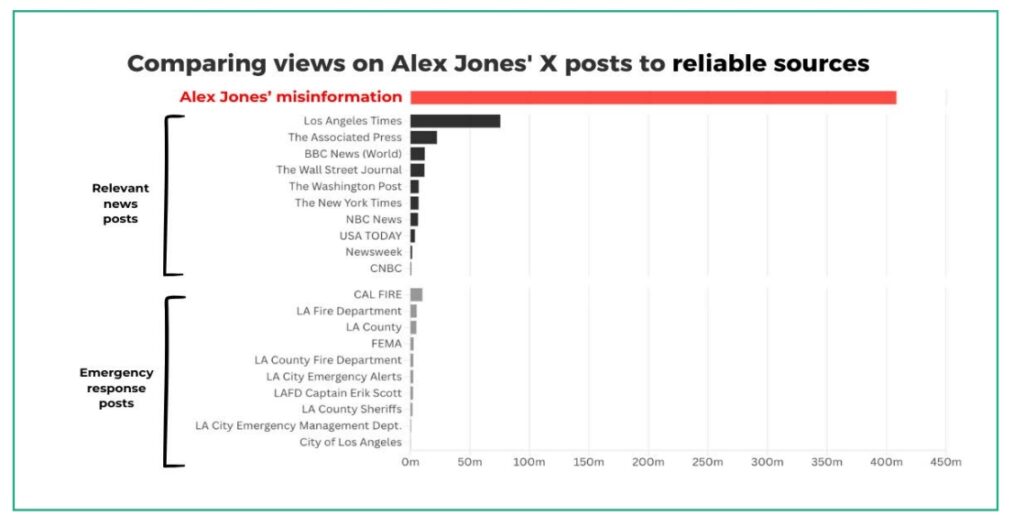
“It’s very clear that misinformation is radically outperforming accurate information on social media during extreme weather events,” Callum Hood, head of research at CCDH, told me in an interview. “Platforms have all but abandoned efforts to supply their users with accurate information alongside disinformation.”
The efforts Hood is referring to once included third-party fact-checkers employed by the tech companies. Most such teams have been disbanded, Hood said. “They’ve basically given up on doing that.” In its place, the platforms now use some form of “community notes” where false information can be flagged. As is, these systems are not working, the report finds. On X, 88% of misleading extreme weather posts were from verified accounts. Researchers checked Meta posts about extreme weather for information labels, Community Notes, or fact-checks, “and found that 98% of posts lacked any label at all.” And YouTube displayed ads adjacent to 29% of the misleading extreme weather videos CCDH looked at.
A Starbucks ad featuring a close-up of luscious whole beans and its green-and-white logo appeared alongside a video from Charlie Kirk titled “THIS IS CRAZY! California’s Leaders Leave Firefighters Without Any Water?!” in which Kirk claims that the January fires were caused by poor forestry management driven by environmental policies and “LGBTQ pet projects,” the report notes. These misleading claims were rampant. My UCLA colleagues put together a long FAQ aiming to debunk this kind of misinformation back in January while the fires were still burning. Journalists in many traditional newsrooms did a good job of fact-checking and swatting down conspiracy theories. Social media and digital ads present a much tougher challenge. Does Starbucks really want to plug its products next to this stuff?
Here’s another example from the news last week. After a record-breaking fire season in Oregon, lawmakers wanted to map out the state’s fire danger, but misinformation quickly spread about the effort and ultimately killed the map, Rob Davis writes for ProPublica. Some saw a shadowy campaign to depopulate rural areas. People in a Facebook group devoted to hating on this wildfire map mused about “Agenda 21,” a conspiracy theory falsely claiming the United Nations wants to force people into cities so they can be more easily controlled, Davis reports. “In the end, what’s most remarkable about the campaign against Oregon’s wildfire map isn’t that misinformation found an audience. It’s that it worked.”
Conspiracy theorists can’t be censored away. In the case of Alex Jones, he could soon be forced by a court to stop airing his Infowars show and “give up the company’s property, including everything from desks and microphones to the Infowars brand name,” NPR reported last week. But don’t expect him to leave social media or even lose his verified blue checkmark, as long as he can sell military-style “tactical daggers” to a loyal audience.
That’s why CCDH is focused on the tech companies and the role of their platforms. “They should be providing ways especially around weather events… to get fact-checks or reformed community notes,” Hood said. “These systems are not working.”
One bright spot is that we’re starting to see a new genre of content that can compete for laughs and clicks and take the conspiracy theorists down a notch. If someone you love watches Joe Rogan, please immediately send them this new video from Climate Town destroying his understanding of graphs.
Welcome back to The Drain, a weekly roundup of environmental and climate news in an attempt to drain the proverbial flood of information and misinformation. If you’re new to this newsletter, please subscribe. Here’s what else I see…
Los Angeles and California
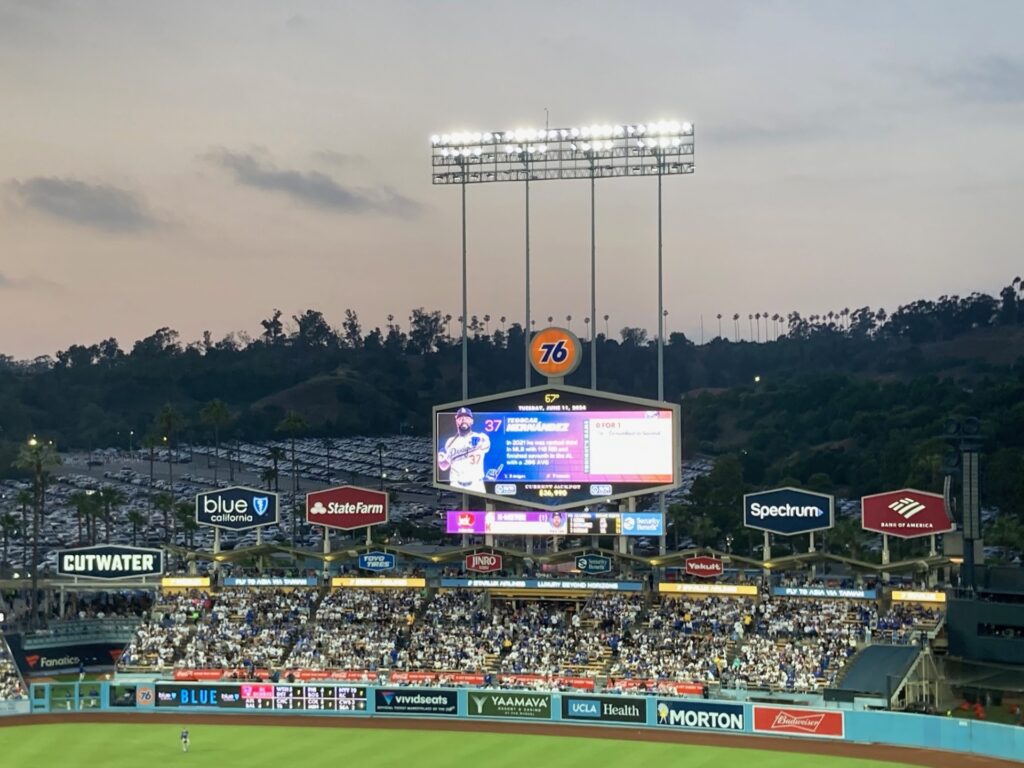
You may have seen that “in an Olympic first,” our LA-area venues used for the 2028 Olympics and Paralympics will be allowed to have corporate sponsor names. LA28 has gotten permission from the IOC to sell naming rights for venues.
Now the question is, Alissa Walker writes at Torched, “What if a local fossil fuel company wants to shell out the big bucks for an LA-owned property? Do we get final approval over renaming the city’s convention center the Chevron Convention Center for the summer?”
Of course, we already have the 76 sponsorship that flies high at Dodgers Stadium, which will be the official baseball venue for 2028. I’ve written in the past that the notoriously strict “clean venue rules” enforced by the International Olympic Committee mean that the Dodgers will almost certainly have to take down the Big Oil logos. Last week’s announcement by LA28 reaffirmed that “Outside of naming rights partners, standard clean venue Games policies will still apply.” And that’s IOC’s call, not LA28.
From sports to schools… Many historically disadvantaged LAUSD schools were awarded millions in state funding to “green” their schoolyards. So why aren’t we seeing the results? A good story from AfroLA by Maylin Tu quotes parents and advocates who say the district is forcing the projects through “a frustrating approvals process” and putting at risk millions of dollars in funding. (Full disclosure: my partner works at a nonprofit that works on schoolyard greening. This underreported story is spot on.)
This statewide story has been inescapable in recent months: how will California manage the impending loss of two more major oil refineries without a big politically unpopular spike in gas prices? Severin Borenstein has a good take for policymakers. “The state must plan today for the import capacity that can smooth the transition,” he writes at the Haas blog.
California’s Fish and Game Commission has approved a sweeping conservation plan “that identifies where Joshua trees may survive in a warmer future and plots out how to best protect that land,” reports Alex Wigglesworth for LAT.
Lake Mead and Lake Powell — the largest reservoirs in the country — could see alarming declines in the coming years, the U.S. Bureau of Reclamation announced last week.
The Future of Climate Policy

Saturday would have been the third birthday of the Inflation Reduction Act — if Republicans hadn’t strangled it in the crib.
The New York Times took stock of the various challenges, victories, and the “generational loss” among environmental groups for a piece that got some pushback this week. There’s a focus on Sierra Club (reeling from leadership vacuum), Greenpeace (reeling from a massive court judgment on appeal), Rewiring America (reeling from job cuts and revenue loss), but also Earthjustice (record court cases and some early victories), and NRDC (strong initial fundraising) as well as Tom Steyer and Bill Gates. “Across the environmental movement, there is a widespread sense that money from donors will be harder to come by in the years ahead,” David Gelles, Claire Brown, and Karen Zraick write. But what about the setback for, you know, the generations of humanity? Covering activism is important, but sometimes a narrow framing misses the bigger story.
Reading this you might also get the impression that all environmental activists are national groups. They are not. Missing from this article is any investigation of why more foundations and philanthropists haven’t pivoted to state action, as Sylvia Chi points out on Bluesky.
As for the Sierra Club’s woes, Suhauna Hussain and Lila Seidman put it into a California context for the LA Times business pages. California “plays an outsize role in the club, home to its headquarters and roughly 134,000 members.”
One key question is why some of the American communities that benefited the most from the IRA didn’t act to protect it. Case in point: Texarkana, which is anchored around twin cities spread across the Texas-Arkansas border. The region “serves as a case study in the uphill struggle of the Democratic Party to win — and win back — working-class support,” Thomas B. Edsall writes.
Heatmap News contributor Advait Arun mourns what’s been lost and charts a path toward what should come next in a long article.”The way forward for Democrats starts with mapping out exactly how far they didn’t go, and ends with going there,” he writes, focusing on how to coordinate project development differently if they get another shot at IRA style investment in clean energy.
I wrote last week about the Energy Department’s embrace of pseudoscience and now Carbon Brief has asked dozens of climate scientists whose work was cited to review the parts of the Energy Department report where their work was used, and they collectively found 100+ misleading or false statements.
Meanwhile, the other shoe dropped late last week: The Trump administration’s Environmental Protection Agency, Interior and Energy departments released plans Friday to “peel back climate and environment protections in an effort to deliver an agenda focused on fossil fuel energy development,” Bloomberg Law reports. That includes the official EPA proposal for revoking the endangerment finding.
There’s a lengthy Q&A between my UCLA colleague Ann Carlson and Alex Nieves in the Politico California Climate newsletter about a possible silver lining to the endangerment finding. And Harvard Law shared this legal analysis of the EPA proposal.
The IRS released strict new guidance on Friday for wind and solar projects attempting to access the federal tax credits that start phasing out next year and dictated that almost all new projects will need to actually begin physical construction to be eligible. It could have actually been much worse, Emily Pontocorvo reports at Heatmap News.
One area of potential progress remains methane monitoring and my UCLA Emmett Institute colleagues published a new report, “Remote Sensing of Atmospheric Methane: A Primer for Policymakers on the Science of Methane Satellites” which provides an accessible introduction to the science and technology of methane remote sensing, focusing especially on new satellite-borne methane detection instruments. Cara Horowitz blogged about the report at Legal Planet.
Good News
The National Electric Vehicle Infrastructure (or NEVI) program is back. After a 6-month freeze, the Trump administration is restarting funding for a federal program to build high-speed electric vehicle chargers along U.S. freeways. After losing some court battles, the DOT has released some of the money while removing a number of Biden-era requirements, NPR’s Camila Domonoske reports.
California has added 2.5 million acres to the state’s conserved lands in the last 3 years, totaling 26% of lands protected, and 22% of coastal waters. Wade Crowfoot made the announcement at a conservation conference in San Diego conference last week. It’s been 5 years since California set its 30×30 target.
Climate disclosure rules have survived in court. A federal judge denied a request by the U.S. Chamber of Commerce to block SB 253 and SB 261, the pair of California laws requiring large businesses to disclose their greenhouse gas emissions and report their climate-related financial risk. The court found the groups unlikely to succeed on the merits of their facial First Amendment claims.
Rivian has finally announced the details, and a date in September, for its groundbreaking on a long-planned, $5 billion factory in Georgia, reports the Atlanta Journal Constitution. After Ford’s announcement last week, this is the second round of good news for EV production in the US.
Bad News
Plastics treaty negotiations in Geneva collapse. After 10 days of talks, countries failed to agree on a single article in the larger treaty, including one that would seek to curb plastic production, Hiroko Tabuchi writes at the NYT. Fossil fuel-producing nations – including Gulf states, Russia and the US – fought any provisions aimed at reducing plastic production, Matteo Civillini reports for Climate Home News.
For the third year in a row, water gushed out of an Alaskan glacial lake last week, threatening the state’s capital city of Juneau. Water pooled on several streets, in some yards and in some homes. The annual occurrence has been spurred by a warming climate. The good news is that sandbag-style barriers installed held back the record levels of flooding and prevented widespread damage, AP reports.
The US Postal Service is (again) facing congressional attempts to strip billions in federal funding for its plan to replace gas guzzling mail trucks with EVs. In June, the Senate Parliamentarian blocked the tax package from including the Postal Service cuts. But Republicans say they will pursue rescinding the remaining dollars.
Other items worth your time
Factory farms make it harder to breathe in these communities: A report by researchers at UC Santa Barbara and the University of Michigan maps cattle and hog farms across the US and finds that these animal feeding operations tend to be sited in communities with higher percentages of Latino residents and uninsured residents, Grist reports.
As we approach the decade anniversary of the Paris Agreement, Carbon Brief’s Josh Gabbatiss asked 16 experts how they think the COP should be reformed. Their answers are grouped by themes.
Here’s another way Trump is driving up energy bills: Keeping big, retirement-age, fossil-fueled power stations operating indefinitely will cost U.S. ratepayers more than $3 billion per year, according to this new research from Grid Strategies on behalf of four large environmental groups.
Media Industry News

There’s a great, new (free) Substack called “Through the Smog” for anyone who wants uplifting decarbonization and climate policy stories from an expert advocate in the field. Adrian Martinez is director of the Right to Zero Campaign at Earthjustice (and an Emmett Institute board member). “As we venture into the future, it will be important to share ideas and thoughts on the most urgent things happening,” says Martinez.
A group of Abundance-oriented writers and journalists led by the Atlantic’s Jerusalem Demsas yesterday launched a new publication called The Argument aimed at “arguing in favor of what liberalism is for, rather than just what it’s against.” Online shade thrown at the effort has focused on the inclusion of centrist voices like Matt Yglesias, but the project also claims Derek Thompson, Robinson Meyer, and Kyla Scanlon.
MSNBC is changing its name to MS NOW, short for My Source News Opinion World as part of a spinoff from Comcast and an experiment in branding nightmares.
And lastly, does the West Coast really need a conservative tabloid?
New York Post Media Group, a subsidiary of Rupert Murdoch’s News Corp., plans to launch a daily Los Angeles-based right-leaning tabloid called “The California Post” in early 2026. More news is good news. But judging from how Breitbart covered the Palisades fire and the rebuilding effort (Exhibit A), I don’t think Angelenos will be well served by yet another outlet that will view extreme weather and responsive policy through the prism of conspiratorial conservatism.




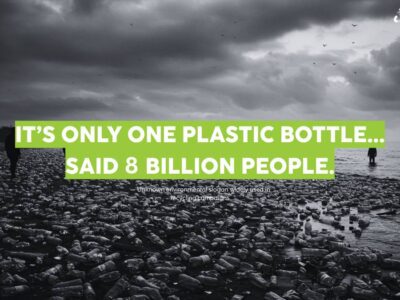
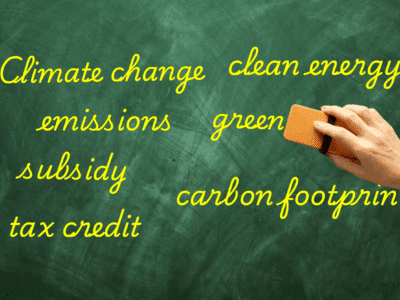
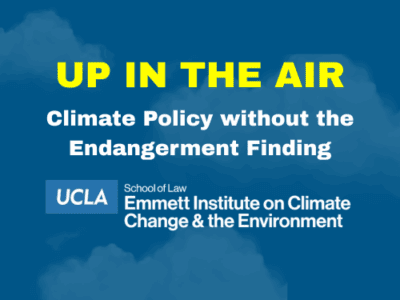
When it’s too hot, people are dumber. I read that in the paper.
This is a very interesting post – thank you. Many new-to-me sources here.
Question: as a person who can never make it through anyone’s “privacy policy” … you-all aren’t going to do anything with my email address if I subscribe, right?
To me, it is better for me to just come back here every so often. However, if it is helpful to your website for some reason, then I can also subscribe. I am not able to donate much right now but if counting my eyeballs is helpful for you, then I can do that. (And come to think of it, I never use that account anyway. Hmm.)